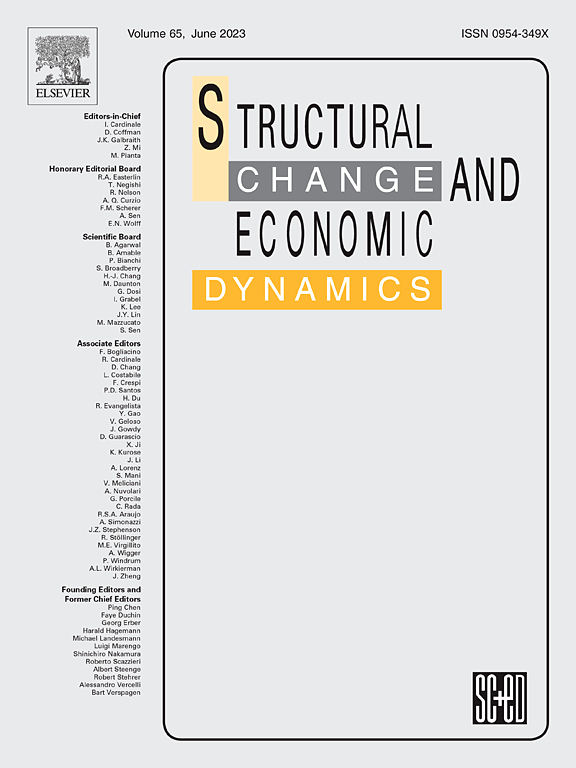Evaluation of bioeconomic practices within structural changes using picture fuzzy decision-making model
IF 5.5
2区 经济学
Q1 ECONOMICS
引用次数: 0
Abstract
This study examines the impacts of the bioeconomy transition from a multidimensional perspective. As a growing response to sustainability challenges, the bioeconomy is driving dynamic structural changes in both the economy and society. This transition holds significant potential for job creation, integration with circular economic systems, and the revitalization of rural areas. Given that the transformative effects of emerging bioeconomic practices vary in scale and scope, their evaluation in the context of bioeconomic growth is essential for analyzing their efficiency and feasibility. The evaluation process should have a multidimensional approach, addressing technical and social factors, economic considerations, environmental expectations, and regulatory constraints. Taking complex nature of assessment problem into account, this study introduces a multi-criteria decision-making analysis (MCDA) framework to formulate evaluation of different alternatives under uncertain constraints setting. A hybrid combination of three different MCDA methods and new divergence measure for picture fuzzy sets are developed to estimate objective weights of criteria in assessing the trends concerning their multidimensional impacts. The framework is applied to the case of Türkiye, a country with substantial bioeconomic growth potential. A structured survey is conducted to assess current bioeconomy trends. Three biotechnological alternatives are evaluated against fourteen criteria, categorized into four dimensions: technological, economic, environmental, and social. The findings indicate that the use of biotechnology for enzyme production receives the highest prioritization across these dimensions, highlighting its strategic importance in advancing bioeconomic growth. While the case study of Türkiye demonstrates the model’s implementation and effectiveness, the analysis is further extended to offer policy recommendations—such as establishing a robust institutional framework that enhances local governance capacities.
利用图像模糊决策模型评价结构变化中的生物经济实践
本研究从多维角度考察了生物经济转型的影响。作为对可持续性挑战的日益增长的回应,生物经济正在推动经济和社会的动态结构变化。这一转变在创造就业、融入循环经济体系和振兴农村地区方面具有巨大潜力。鉴于新兴生物经济实践的变革效应在规模和范围上各不相同,在生物经济增长的背景下对其进行评估对于分析其效率和可行性至关重要。评价过程应采用多层面的方法,处理技术和社会因素、经济考虑、环境期望和管理限制。考虑到评估问题的复杂性,本文引入了一个多准则决策分析(MCDA)框架来制定不确定约束条件下不同方案的评估。本文提出了一种混合组合的三种不同的MCDA方法和一种新的图像模糊集散度测度,以估计在评估其多维影响趋势时标准的客观权重。该框架适用于斯里兰卡这个具有巨大生物经济增长潜力的国家。进行了一项结构化调查,以评估当前的生物经济趋势。根据14项标准对三种生物技术替代品进行评估,这些标准分为四个方面:技术、经济、环境和社会。研究结果表明,利用生物技术生产酶在这些方面得到了最高的优先考虑,突出了其在促进生物经济增长方面的战略重要性。虽然对t rkiye的案例研究证明了该模型的实施和有效性,但该分析进一步扩展到提供政策建议,例如建立一个强有力的制度框架,以增强地方治理能力。
本文章由计算机程序翻译,如有差异,请以英文原文为准。
求助全文
约1分钟内获得全文
求助全文
来源期刊

Structural Change and Economic Dynamics
ECONOMICS-
CiteScore
9.60
自引率
4.90%
发文量
159
期刊介绍:
Structural Change and Economic Dynamics publishes articles about theoretical, applied and methodological aspects of structural change in economic systems. The journal publishes work analysing dynamics and structural breaks in economic, technological, behavioural and institutional patterns.
 求助内容:
求助内容: 应助结果提醒方式:
应助结果提醒方式:


